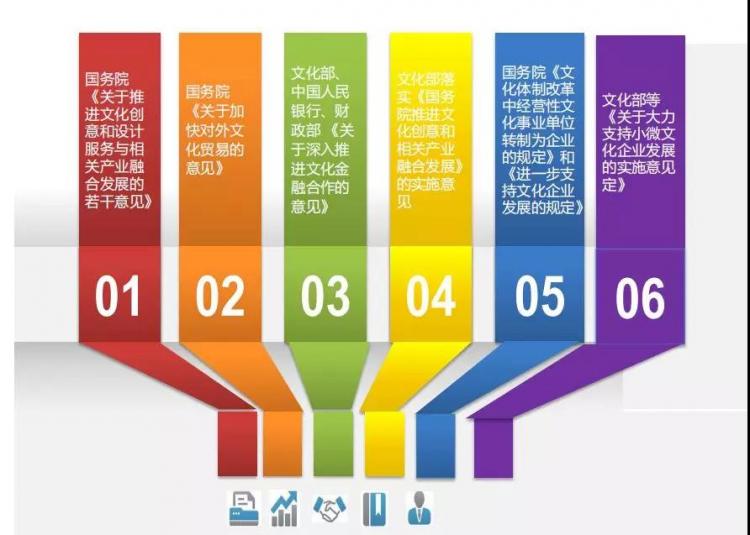1. The concept of suspension
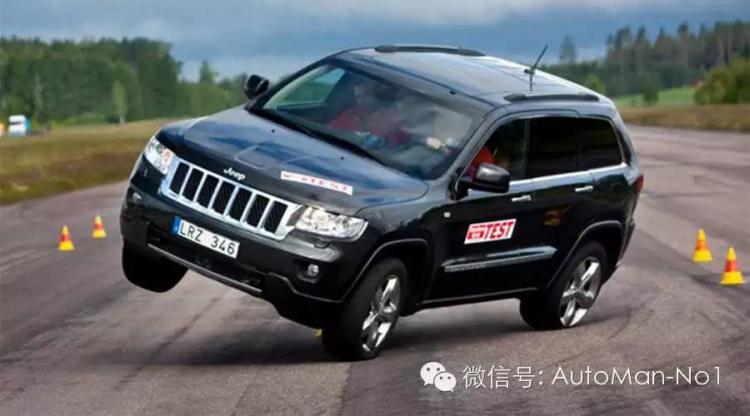
First understand what is a suspension:
Simply put, the suspension is the arms and legs of the car. Professionally speaking, it is the general term for all force-transmitting connection devices between the frame and the axle or wheels.
Suspension mainly transmits all forces and moments between the wheels and the body, such as support force, braking force and driving force, etc., and eases the impact load transmitted to the body from the uneven road surface, attenuates the vibration caused by it, and ensures the comfort of the occupants. sex.
In human terms, when you jump over the wall and jump down, you have to rely on your arms and legs to cushion, and you have to rely on the strength of your legs when running to stop suddenly. There is cartilage between the bones, and there are muscles and muscles between the bones, so the suspension is thick. Arms and legs What’s the best, but it would be even better if the muscles are all tendons.
A typical automobile suspension structure is composed of elastic elements, shock absorbers and guiding mechanisms. These three parts play the roles of buffering, vibration reduction and force transmission respectively. Most suspensions have a coil spring and shock absorber structure, but the guiding mechanism of different types of suspensions is very different, which is the core component of the difference in suspension performance.
2. Classification of suspension
According to different structures, it can be divided into non-independent suspension and independent suspension. At present, the front suspensions of domestic passenger cars are all independent suspensions, and only the rear suspensions have non-independent suspensions.
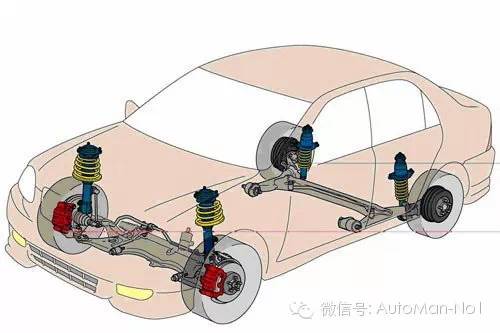
“Schematic diagram of the placement of the suspension on the chassis of the car”
3. About independent suspension
As long as the independent suspension is properly tuned, it will definitely be better than the non-independent suspension in terms of road performance and handling. After all, the wheels on each side of an independent suspension are individually connected to the frame or body under the elastic suspension system.
advantage:
Light weight reduces the impact on the body and improves the ground adhesion of the wheels;
Soft springs with low stiffness can be used to improve the comfort of the car;
The position of the engine can be lowered, and the center of gravity of the car can also be lowered, thereby improving the driving stability of the car;
The left and right wheels jump independently and are independent of each other, which can reduce the tilt and vibration of the vehicle body.
shortcoming:
The independent suspension system has the disadvantages of complex structure, high cost, and inconvenient maintenance. At the same time, because of the complex structure, it will occupy some passenger space in the car. Because of its complexity, a sub-standard component quality will cause more serious problems.
Types of independent suspension:
According to different structural forms, the independent suspension system can be divided into wishbone type, trailing arm type, multi-link type and McPherson type suspension.
4. McPherson
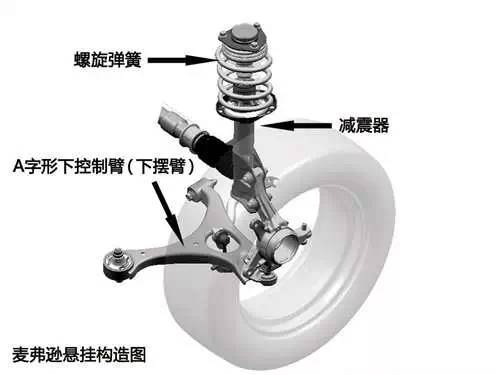
McPherson suspension is currently the most common front suspension, and it is also the most mature type of suspension. Its biggest feature is its relatively small size, which is conducive to a relatively compact engine compartment layout. However, it is precisely because of the simple structure that it cannot provide sufficient support for the lateral direction, so the phenomenon of steering roll and braking nod will be more obvious.
MacPherson also has some improved variants, BMW double-ball-joint shock-absorbing strut front suspension, and the connecting rod strut-type independent suspension used in some Japanese and Korean cars are all variants of MacPherson, the principle is the same, only in Different in tuning and details, improved on MacPherson.
5. Multi-link
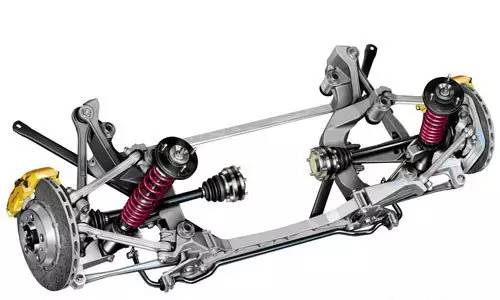
Multi-link independent suspension can be divided into multi-link front suspension and multi-link rear suspension system. Among them, the front suspension is generally a 3-link or 4-link independent suspension; the rear suspension is generally a 4-link or 5-link rear suspension system, and the 5-link rear suspension is widely used.
The comfort performance of the multi-link suspension is very good, and the handling performance is also comparable to that of the double-wishbone suspension. For many medium and large vehicles, due to the ample space and the emphasis on comfort performance and handling stability, most of them use multi-link suspension. rod suspension.
The rear suspension of the Sagitar that broke the shaft a while ago used a non-independent torsion beam, but in May, the new car was secretly upgraded to a multi-link rear suspension, and the price remained unchanged.
6. Double wishbone

The double-wishbone type usually adopts the wishbone of unequal length up and down (short on the top and long on the bottom), so that the camber angle can be automatically changed when the wheel moves up and down, and the wheelbase change and tire wear can be reduced, and it can adapt to the road surface and the tire is grounded. The area is large and the ground is good. Many models that emphasize sports performance like to use double wishbones.
The disadvantage of the double wishbone is that the manufacturing cost is high, the setting of the suspension positioning parameters is complicated, and it takes up more space than the McPherson.
7. Double wishbone
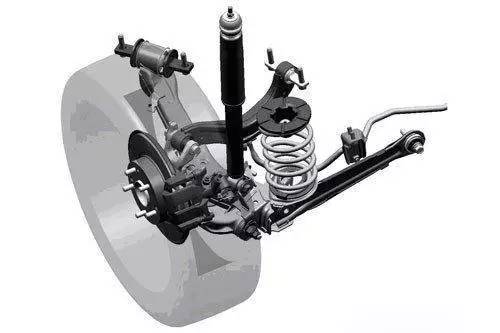
What is common in China is that the double wishbone suspension is also a kind of independent suspension. The double wishbone suspension and the double wishbone suspension have many commonalities, but the structure is simpler than the double wishbone suspension, which can also be called a simplified version. double wishbone suspension. The front suspension of some medium-sized cars in China will use double wishbone, and there are also alternative compact models such as Civic that are used as rear suspension.
In fact, the use of independent suspension is related to the grade of the vehicle and the positioning of the product. Small cars rarely use independent suspension on the rear suspension, while large luxury cars rarely use McPherson on the front suspension. . Basically, if a car used double wishbone or double wishbone before, and the new model is changed to McPherson, it is for making more money, and has nothing to do with improving performance.

8. Non-independent suspension
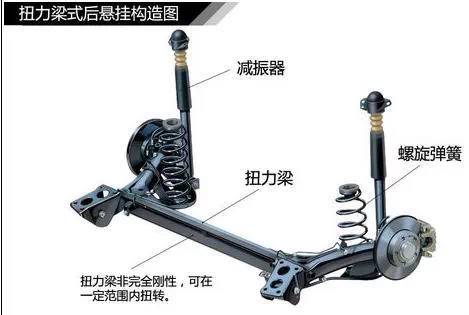
The structural feature of the non-independent suspension system is that the wheels on both sides are connected by an integral frame, and the wheels together with the axle are suspended under the frame or the body through the elastic suspension system.
The non-independent suspension system has the advantages of simple structure, low cost, high strength, easy maintenance, and small changes in the alignment of the front wheels during driving. The configurations that appear (Citroen and Peugeot are wonderful, not included).
Torsion beams, torsion beams, trailing arms, and so-called semi-independent suspensions are all types of non-independent suspensions. , torsion beam, and torsion beam, you must know that this product is a non-independent suspension, don’t listen to their nonsense.
Advantages of non-independent suspension systems:
1) The left and right wheels will be involved with each other when bouncing, and the small change in tire angle makes the wear of the tire small.
2) It is not easy to change the angle of the wheels when the vehicle height is lowered, so that the handling feel remains consistent.
3) Simple structure, low manufacturing cost and easy maintenance.
4) It occupies less space and can reduce the height of the vehicle floor.
Disadvantages of non-independent suspension systems:
1) When the left and right wheels are bouncing, they will be involved with each other, which will reduce the ride comfort and control stability.
2) Due to the simple structure, the design freedom is small, and the control stability is poor.
This second shortcoming can be regarded as Chinese characteristics. The initial design of many models is independent suspension. Out of cost and profit considerations, it is replaced by non-independent suspension in China, but the space advantage of non-independent suspension is not reflected. On the contrary Reliability is probably due to hasty design, or excessive cost control, there may be defects, coupled with the irresponsibility of the company and the lack of sufficient durability testing, it is not as good as the reliability of independent suspension (don’t look, the public said you).
9. Suspension adjustment
In fact, in addition to the above-mentioned basic conditions of the suspension, the performance of the suspension also depends on the adjustment of the car company. Often, this link will cause a difference in performance for models with similar suspension configurations. After all, if in order to achieve good comfort, the vibration of the car needs to be greatly buffered, so the spring must be designed softer, but the spring is soft, but it is easy to cause the car to brake “nod”, accelerate “head up” and seriously roll. It is beneficial to the steering of the car, and it is easy to cause the car to be unstable.
Therefore, although the components of the suspension are simple, the determination of the parameters is quite complicated. Car companies should not only consider the comfort of the car, but also the cost of handling stability.
Based on these three issues, different manufacturers have different inclination strategies, which results in the handling characteristics of different models. An inexperienced company, even equipped with a very advanced suspension, will not drive very well if it has not learned to tune it correctly.
This article is original by AutoMan, please indicate the author and source when reprinting, part of the content comes from Autohome.




